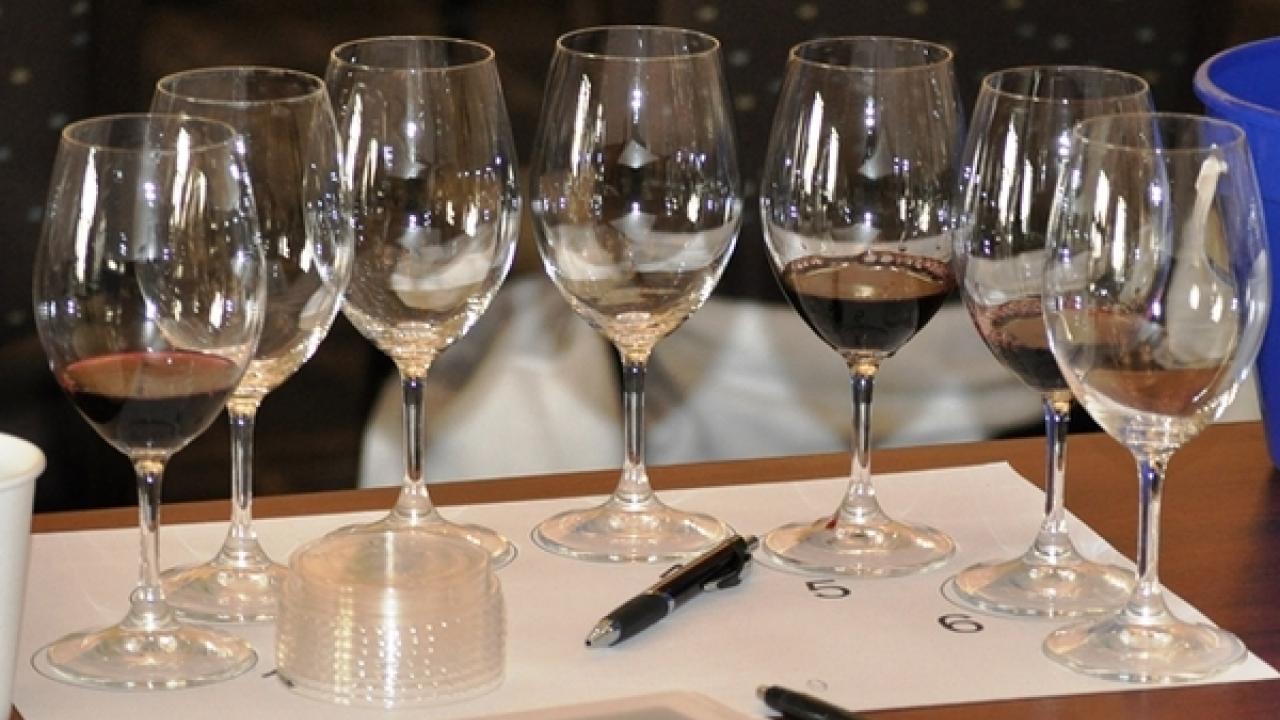
Three on-campus Extension Programs were held between January and March 2016. The January 13 program was dedicated to a review of the role of microbes in wine quality. Optimizing sustainability of wine processing was the topic of the February 19th program and the March 18th program focused on blending.
Microbes of Wine Quality:
Sue Ebeler began the day by summarizing the extensive work that has been conducted on ester production by yeast and the impact thereof on wine aroma and quality. Her presentation covered a variety of wines and wine styles and the factors most important to ester formation and stability. This presentation was followed by a discussion of microbiome analyses of wine and grape microbial communities and how this has informed analysis of specific aromatic characters appearing in wine (presented by Dave Mills). Lucy Joseph presented for the first time her work on the hunt for native heritage yeast in California and Linda Bisson ended the presentations by discussing what this means for native fermentations and noted the growing trend internationally to define "native" as "autochthonous" (or "originating in the region in which it is found") and characterized Lucy's isolates as autochthonous, immigrant or hybrid and lead a lively discussion of the group on the merits of such distinctions in the marketplace.
A panel of winemakers discussed uses of heritage, autochthonous, immigrant and commercial strains in decision making for wine fermentations. The afternoon focused on research on the inhibitory bacteria being found at higher frequencies in California wines and Gordon Walker presented his work demonstrating that these bacteria can induce a heritable modified metabolic state in yeast thus explaining the observed reductions in fermentation rate and the link to fermentation arrest.
Attendees described the program as "exactly what we want to see", "usable information dense", and "the perfect blend of research and application".
Optimizing Sustainability of Wine Processing:
Roger Boulton started the program with a thought-provoking presentation on winery footprints including the overuse of "green" and certificate programs covering the criteria for some of these designations that then weaken the value of legitimate sustainability programs. He covered the issues and topics that should be part of a sound sustainability program and ranking system. Organizer Jill Brigham followed by presenting the Department's program for "transitioning from net negative to net zero to net positive" and described the existing and planned programs and research enabled by the Jackson Sustainable Winery Building.
Aaron Stainthorp of Francis Ford Coppola Winery described their extensive program for wastewater reuse and the most effective and necessary treatments of water, followed by a discussion of the impacts of treated water on vineyard soil composition by Dave Hirzel. Aaron's presentation of the values of oyster shells in wastewater pH neutralization generated great interest among the attendees. Peter Lescure described the elements of engineering a sustainability plan, describing what works and what does not.
The afternoon included a discussion of designing alternatives to single-use fining agents presented by Ron Runnebaum. That was followed by a panel of suppliers who covered the most effective strategies for reduction of use, including taking a holistic view of the wine and processing to minimize processing-derived needs for fining. They stressed the importance of fining trials and knowing the nature of the material you are trying to remove as an essential first step in selecting the optimal fining process.
Josh Prigge of Fetzer Vineyards then presented "Zero Waste as a Way Forward" and covered the breadth of initiatives at Fetzer aimed at making them the first zero waste winery. This well-received presentation initiated significant discussion among the attendees.
Blending for Style:
The Blending for Style program featured presentations by seven stellar winemakers: Signe Zoller, Celia Welch, Michael Silacci, Neil Bernardi, Charlie Peterson, Tom Stutz and Rob Davis. Each winemaker discussed their goals when deciding on a blend and the topics ranged from enhancing varietal character, blending to represent time and place, creating a blend as a novel style, blending to enhance style, use of yeast strains to achieve desired goals in a blend and blending to create house style. The day ended with a panel discussion with all of the winemakers.
